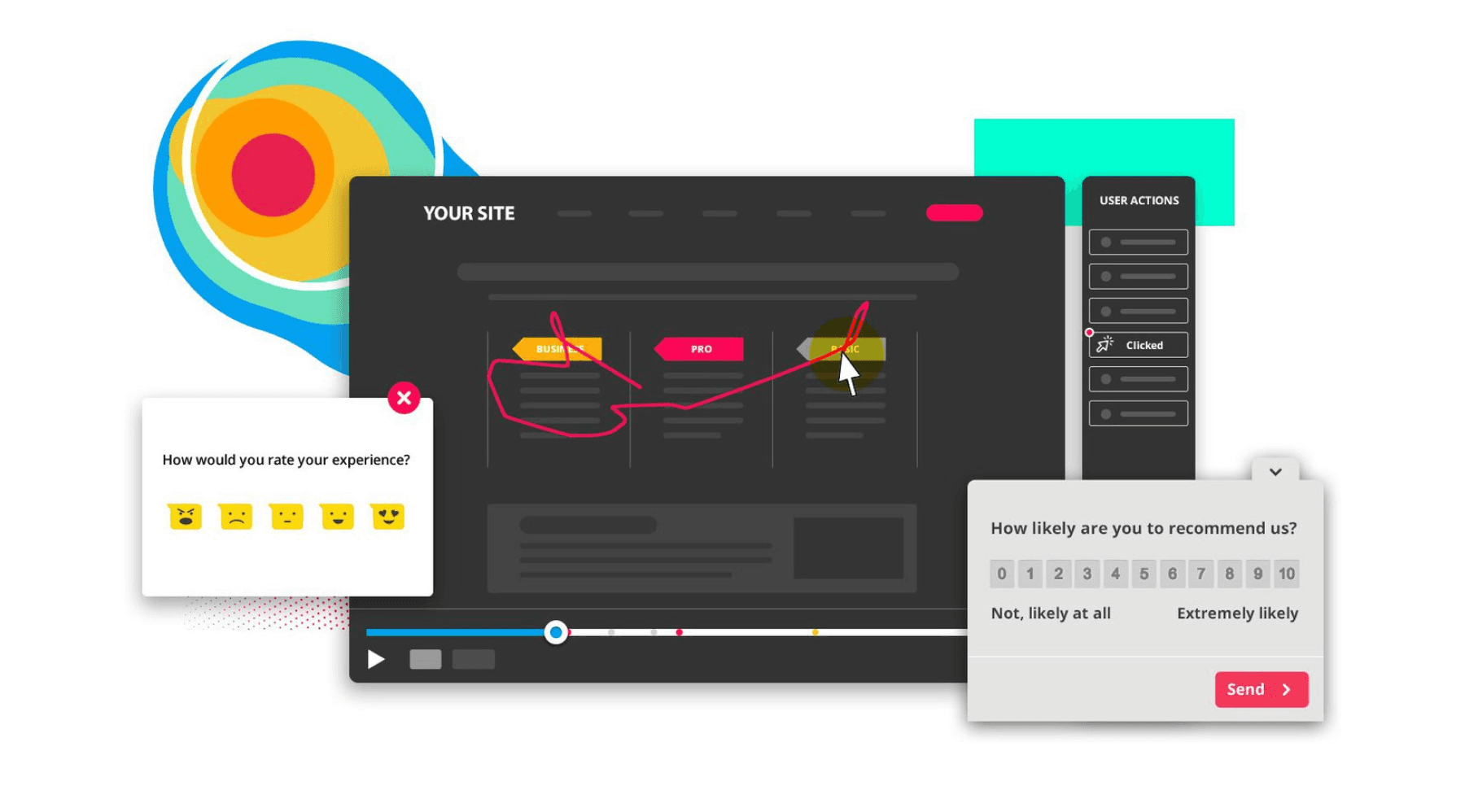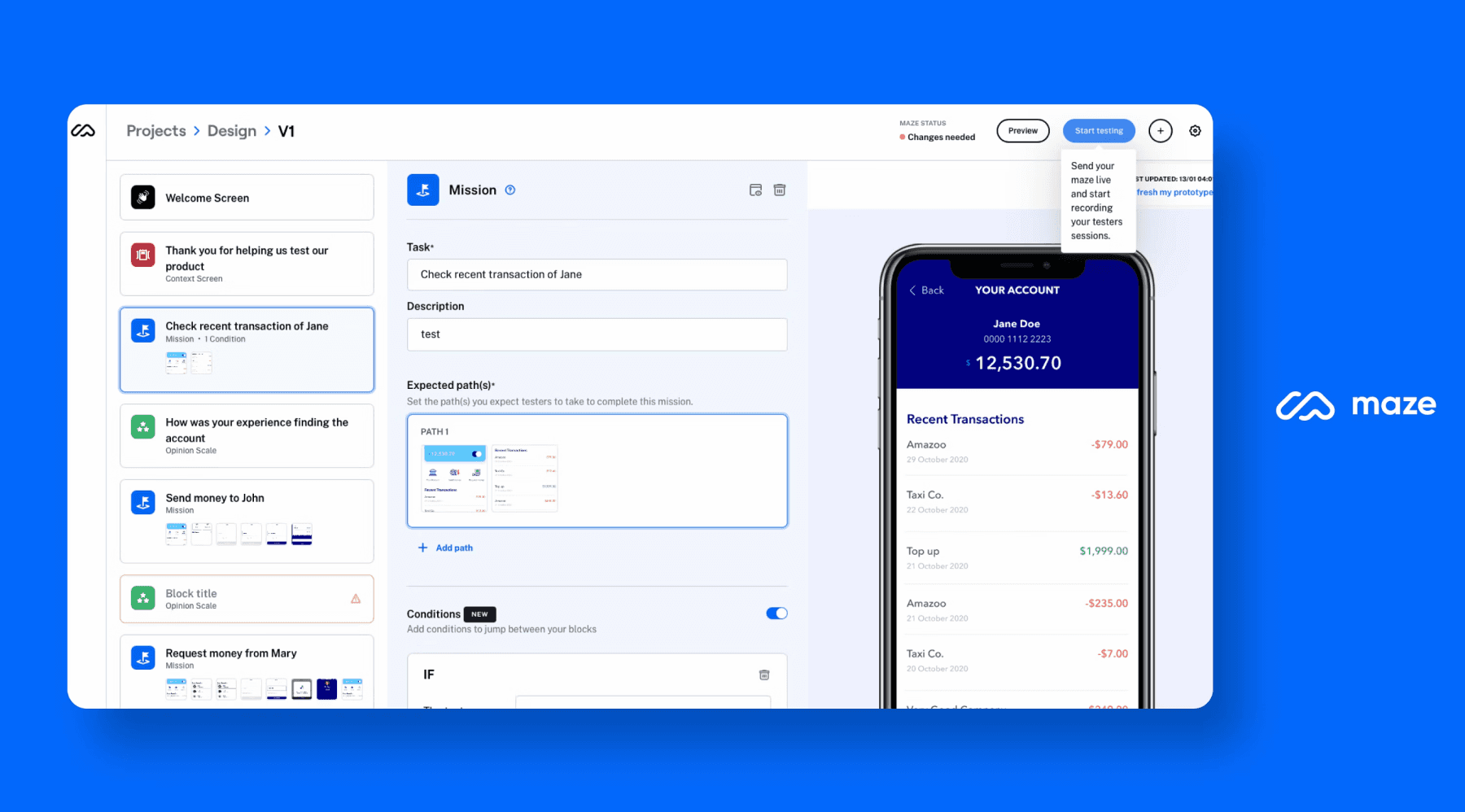Innovative Methods for Conducting User Research in 2024
Innovative Methods for Conducting User Research in 2024
Innovative Methods for Conducting User Research in 2024
By:
Ali Bagheri
|
Published on:
February 19, 2024
|
Read time:
5 Minutes
By:
Ali Bagheri
|
Published on:
February 19, 2024
|
Read time:
5 Minutes
By:
Ali Bagheri
|
Published on:
February 19, 2024
|
Read time:
5 Minutes



The world of user research isn't just growing; it's transforming at warp speed. Thanks to some pretty neat tech advancements and a big nudge from the remote work wave, the way we dig into what makes users tick is getting a major makeover. Let's dive into what's making waves in getting to the heart of user needs and desires.
Cutting-Edge Techniques for User Research
Remote Research Methods:
Picture being able to tap into user insights from anywhere, anytime. That's the beauty of remote research methods. They're like having a magic portal to users from every corner of the globe, helping researchers save a ton of time and resources. From video chats that feel like coffee catch-ups to surveys that users can fill out in their PJs, these tools are breaking down the old school barriers of geography.
AI-driven Analytics
Now, let AI take the stage. It's like having Sherlock Holmes on your team, but way faster. AI tools are sifting through mountains of data, spotting trends, and uncovering user secrets faster than you can say "Elementary, my dear Watson." This isn't just about making guesses; it's about making smart, data-backed decisions that can really dial into what users need and want.
Social Media for Real-time Feedback
Think of social media as the world's biggest focus group. It's where you can hear what users are buzzing about in real-time. This is gold for user researchers. It's like being a fly on the wall in millions of conversations, giving you the lowdown on what's hot and what's not without having to ask.
Tools of the Trade
Several tools have emerged as frontrunners in facilitating these innovative research methods:
Hotjar

offers heatmaps and session recordings to visualize user behavior on websites and apps, providing insights into how users interact with various elements.
Maze

Enables usability testing across different stages of the product development cycle, supporting a variety of research activities including task analysis, A/B testing, and more.
Ethnio

Aids in recruiting research participants directly from your website through customizable intercepts, making the recruitment process more efficient and targeted.
Lookback and Userlytics

Notable for their capabilities in conducting remote user testing and interviews, with features that allow for both moderated and unmoderated studies.
Optimal Workshop

Offers a suite of tools for card sorting, tree testing, and surveys, helping to structure information architecture and gather user feedback efficiently.
Conclusion
As we look ahead, it's clear the user research landscape in 2024 is all about being more flexible, efficient, and savvy with data. It's an exciting time to be diving into what makes users tick, armed with tools and methods that feel like they're straight out of a sci-fi novel. This isn't just about keeping up; it's about staying ahead and crafting experiences that users don't just like but love.
The world of user research isn't just growing; it's transforming at warp speed. Thanks to some pretty neat tech advancements and a big nudge from the remote work wave, the way we dig into what makes users tick is getting a major makeover. Let's dive into what's making waves in getting to the heart of user needs and desires.
Cutting-Edge Techniques for User Research
Remote Research Methods:
Picture being able to tap into user insights from anywhere, anytime. That's the beauty of remote research methods. They're like having a magic portal to users from every corner of the globe, helping researchers save a ton of time and resources. From video chats that feel like coffee catch-ups to surveys that users can fill out in their PJs, these tools are breaking down the old school barriers of geography.
AI-driven Analytics
Now, let AI take the stage. It's like having Sherlock Holmes on your team, but way faster. AI tools are sifting through mountains of data, spotting trends, and uncovering user secrets faster than you can say "Elementary, my dear Watson." This isn't just about making guesses; it's about making smart, data-backed decisions that can really dial into what users need and want.
Social Media for Real-time Feedback
Think of social media as the world's biggest focus group. It's where you can hear what users are buzzing about in real-time. This is gold for user researchers. It's like being a fly on the wall in millions of conversations, giving you the lowdown on what's hot and what's not without having to ask.
Tools of the Trade
Several tools have emerged as frontrunners in facilitating these innovative research methods:
Hotjar

offers heatmaps and session recordings to visualize user behavior on websites and apps, providing insights into how users interact with various elements.
Maze

Enables usability testing across different stages of the product development cycle, supporting a variety of research activities including task analysis, A/B testing, and more.
Ethnio

Aids in recruiting research participants directly from your website through customizable intercepts, making the recruitment process more efficient and targeted.
Lookback and Userlytics

Notable for their capabilities in conducting remote user testing and interviews, with features that allow for both moderated and unmoderated studies.
Optimal Workshop

Offers a suite of tools for card sorting, tree testing, and surveys, helping to structure information architecture and gather user feedback efficiently.
Conclusion
As we look ahead, it's clear the user research landscape in 2024 is all about being more flexible, efficient, and savvy with data. It's an exciting time to be diving into what makes users tick, armed with tools and methods that feel like they're straight out of a sci-fi novel. This isn't just about keeping up; it's about staying ahead and crafting experiences that users don't just like but love.
The world of user research isn't just growing; it's transforming at warp speed. Thanks to some pretty neat tech advancements and a big nudge from the remote work wave, the way we dig into what makes users tick is getting a major makeover. Let's dive into what's making waves in getting to the heart of user needs and desires.
Cutting-Edge Techniques for User Research
Remote Research Methods:
Picture being able to tap into user insights from anywhere, anytime. That's the beauty of remote research methods. They're like having a magic portal to users from every corner of the globe, helping researchers save a ton of time and resources. From video chats that feel like coffee catch-ups to surveys that users can fill out in their PJs, these tools are breaking down the old school barriers of geography.
AI-driven Analytics
Now, let AI take the stage. It's like having Sherlock Holmes on your team, but way faster. AI tools are sifting through mountains of data, spotting trends, and uncovering user secrets faster than you can say "Elementary, my dear Watson." This isn't just about making guesses; it's about making smart, data-backed decisions that can really dial into what users need and want.
Social Media for Real-time Feedback
Think of social media as the world's biggest focus group. It's where you can hear what users are buzzing about in real-time. This is gold for user researchers. It's like being a fly on the wall in millions of conversations, giving you the lowdown on what's hot and what's not without having to ask.
Tools of the Trade
Several tools have emerged as frontrunners in facilitating these innovative research methods:
Hotjar

offers heatmaps and session recordings to visualize user behavior on websites and apps, providing insights into how users interact with various elements.
Maze

Enables usability testing across different stages of the product development cycle, supporting a variety of research activities including task analysis, A/B testing, and more.
Ethnio

Aids in recruiting research participants directly from your website through customizable intercepts, making the recruitment process more efficient and targeted.
Lookback and Userlytics

Notable for their capabilities in conducting remote user testing and interviews, with features that allow for both moderated and unmoderated studies.
Optimal Workshop

Offers a suite of tools for card sorting, tree testing, and surveys, helping to structure information architecture and gather user feedback efficiently.
Conclusion
As we look ahead, it's clear the user research landscape in 2024 is all about being more flexible, efficient, and savvy with data. It's an exciting time to be diving into what makes users tick, armed with tools and methods that feel like they're straight out of a sci-fi novel. This isn't just about keeping up; it's about staying ahead and crafting experiences that users don't just like but love.
